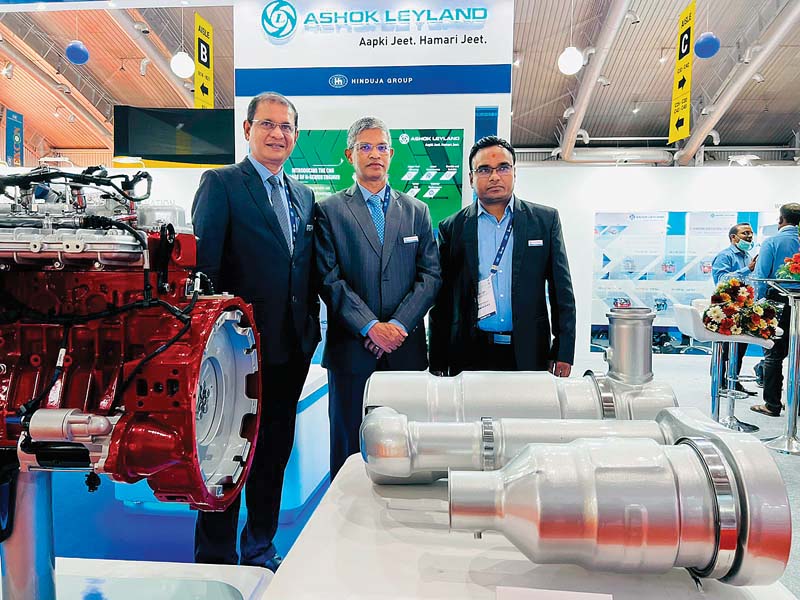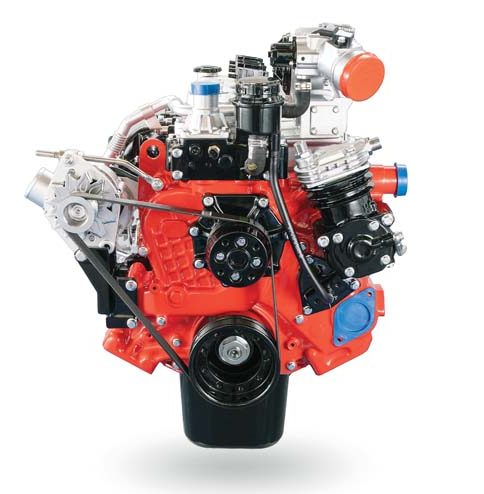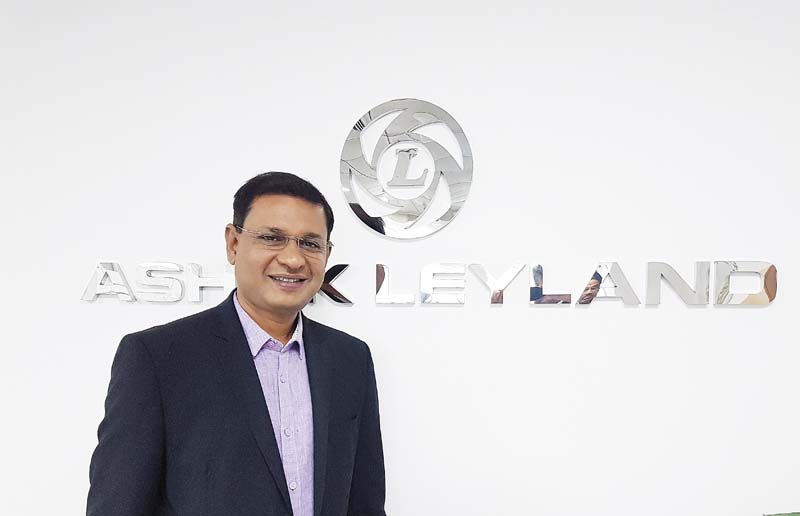Ashok Leyland has taken a step for cleaner CEVs. Prateek Pardeshi looks at the ENGINE exhibitED in line at Excon 2k21.

The rollout of CEV Stage IV emission norms last year was deemed by many as the tipping point for manufacturers to deliver cleaner engines. Those like Ashok Leyland leveraged the Bharat Stage VI Research & Development (R&D) and the learnings from the rollout of BSVI models to take an early mover’s advantage in CEVs. Dheeraj Hinduja, Executive Chairman, Ashok Leyland in a company release stated, “Ashok Leyland aims to make India’s CNG engine sector self-reliant, and to be one of the leaders in the ‘Make in India’ narrative.” Ashok Leyland showcased the CNG H-series four-and six-cylinder engine variants for its off-highway and CEV customers and launched it amidst much fanfare. At Excon 2k21, Ashok Leyland also displayed the six-cylinder A-series of diesel engine alongside. The company also displayed its aftermarket solutions including an Exhaust After Treatment System (EATS) at the trade fair. Speaking on improving fuel efficiency with the use of alternative fuels, Dr N Saravanan, Chief Technical Officer, Ashok Leyland Ltd. shared, “With the increasing need for better fuel efficiency and use of alternate fuels, we have a solid pipeline of such technologies.”
 In the H-series four-cylinder CEV IV engine range, through three engines, the company will cater to power output requirements ranging from 74-130 hp at upto 2200 rpm. With all the three engines known to be suitable for scaling up to CEV Stage-V emission norms with SCR or DPF, the base engines are a testimony to the CV major being in the game for the long run. Offering the best-in-class power, these engines come with a 500-hours drain interval. Under its H series six-cylinder CEV Stage-IV range, the company will work with four engines on the desired power outputs. H4 airless EATS, DEF tank (airless), and H6 Air assisted EATS were on display too. The H series CNG engine stands out with the turbocharge resulting in a higher torque, ECU-controlled gas leak detection, improved cold-start capability, better fuel economy, durable engine valves and valve seats for CNG operation with better drivability, and claimed transient response. In the case of the A-series six-cylinder CEV Stage-IV engine, the company has the 300 hp A6C430022 and the 360 hp A6C436022 in its portfolio.
In the H-series four-cylinder CEV IV engine range, through three engines, the company will cater to power output requirements ranging from 74-130 hp at upto 2200 rpm. With all the three engines known to be suitable for scaling up to CEV Stage-V emission norms with SCR or DPF, the base engines are a testimony to the CV major being in the game for the long run. Offering the best-in-class power, these engines come with a 500-hours drain interval. Under its H series six-cylinder CEV Stage-IV range, the company will work with four engines on the desired power outputs. H4 airless EATS, DEF tank (airless), and H6 Air assisted EATS were on display too. The H series CNG engine stands out with the turbocharge resulting in a higher torque, ECU-controlled gas leak detection, improved cold-start capability, better fuel economy, durable engine valves and valve seats for CNG operation with better drivability, and claimed transient response. In the case of the A-series six-cylinder CEV Stage-IV engine, the company has the 300 hp A6C430022 and the 360 hp A6C436022 in its portfolio.
————————————————————————————
Migrating to CNG CEVs
 In an exclusive Industry Talk session, Rajesh R, Vice President of Defence and Power Solution Business, Ashok Leyland Ltd. spoke to Prateek Pardeshi on CEVs taking a cleaner route.
In an exclusive Industry Talk session, Rajesh R, Vice President of Defence and Power Solution Business, Ashok Leyland Ltd. spoke to Prateek Pardeshi on CEVs taking a cleaner route.
Q. What is the ideology behind introducing CNG in CVs (haulage and people movers) and CEV segments?
A. For the CV industry, CNG already exists in our portfolio. However, for the CEV segment, I do agree it’s a new concept. We believe the migration will happen much faster than expected.
Q. Could you highlight the differentiators of CNG CEVs?
A. Ashok Leyland has been a prominent player in the CV segment. The industry has been occupied with diesel-powered engines for a long time. We want to be a pioneer in the CNG CEV segment and leverage the learnings from the CV segment for the CE segment. CNG may not be used in some industrial applications, for example, portable compressors per se as the latter can work on natural gas. In the terms of efficiency of the platform, CNG has a better TCO and better reliability. Speaking overall, it’d be a win-win for the customer. Looking at the long term prospects of the CNG migration, the customer will still have the option to choose between diesel and CNG.
Q. Is there a void in CNG infrastructure that needs to be addressed?
A. I don’t think there are availability constraints in the case of CNG. More and more mines already have diesel storage, and similarly, CNG filling stations can also be a possibility for them.
Q.Is the new H-series CEV CNG engine the same as the Ecomet CNG? How does the emission compliance vary?
A. It is not a one-on-one match as the power and torque of CEV as we know is more as compared to commercial vehicles. But yes, the base platform remains the same. Also, as of today, there are no emission compliance requirements for CEV CNG engines.
Q. How promising are the export opportunities in the CEV segment?
A. Exports is a different ball game altogether, nevertheless, we would like to look at options where more companies set shop in India. They also export some of the equipment built in India. As our country is considered a manufacturing hub for most of the companies and the whole equipment is exported to neighbouring markets, we see an opportunity to partner with them on a case-to-case basis. We are also looking at a self-service model that will take care of the requirements in those specific projects.
Q. What are the recent developments in the Defence segment?
A. We already have the Stallion which has come a long way from 4×4 to 6×6, and now in the Super Stallion, we have brought in the 12×12 combination. We are now looking at developing smaller platforms to cater to LCV requirements as it’s a large-volume game. We don’t want to stop at soft cabs. We also want to develop armoured cabs in line with the light, bulletproof vehicles segment.
Q. Is an electric Dost on the cards?
A. I think it’s already in the pipeline. My team from Switch Mobility is already working on it.
Q. How are you tackling the supply-chain bottlenecks??
A. It’s a global shortage, for instance, semiconductors and everyone is facing this issue. But we are trying to build alternates. In effect, it is an alternative chip that we are talking about. We are working closely with the manufacturers on how we can migrate, from being one complete chip dependency to another design as an alternative.



















